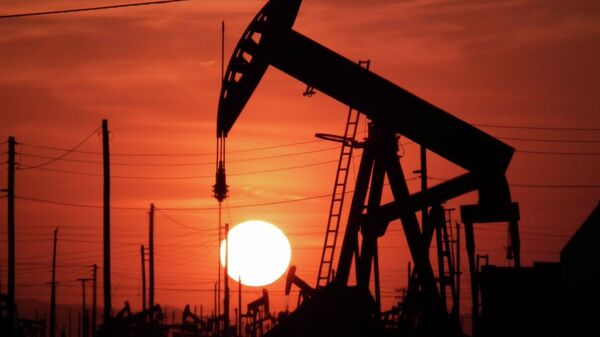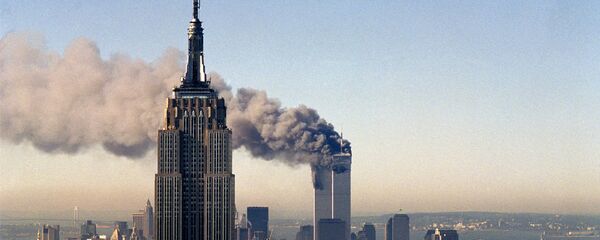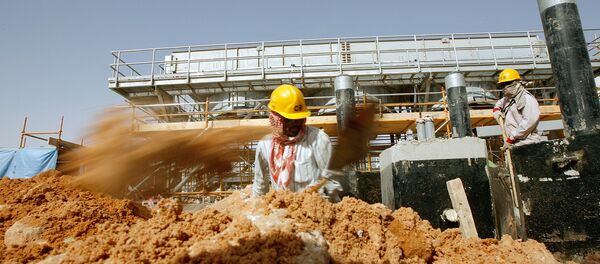In February, the US oil and natural gas titans stared headlong into a cataclysm as prices dropped to $27 per barrel at the apex of the rout, down from a July 2008 peak of $145 per barrel.
On Tuesday, the picture looked more optimistic as prices have rebounded to $48 over the course of several months, leaving the US shale-oil industry gripping to a prayer that the industry could see a full recovery after 130 US oil and gas companies have been forced into bankruptcy since 2015, creating havoc in the industry and in communities across Texas and North Dakota.
Common wisdom suggests that a full market recovery may never fully materialize in the wake of the damage wrought by the cascade in oil prices. Commentators, like Nobel Prize winning economist Paul Krugman, predict the worst is yet to come, calling the US shale industry 'the new subprime.'
Congressional Research Service expert Michael Ratner sounded even less enthusiastic during an April 27 hearing before the Senate Energy and Natural Resources Committee, observing that the oil-market crash resulted in unremitting structural economic damage.
"Companies have cut capital expenditures, laid off workers, filed for bankruptcy protection, sold assets, or been downgraded by credit agencies," he said in prepared remarks. "Cutting capital expenditures, in particular, will have effects on production beyond the five-year time frame."
Others remain optimistic, including energy analyst Michael Rothman, who predicts that oil prices will surge to $85 per barrel by the end of the year. He argued that Saudi Arabia dipped into its energy reserves to artificially deflate the market, despite a national budgetary breakeven point tied to $66.70 per barrel oil. The kingdom has recently faced downgrades from Moody’s credit rating agency after flooding the market with cheap oil.
How did Saudi Arabia Crash the Oil Market and What is their Strategy?
In late-2015 the world faced the specter of a global economic depression, with projections for Chinese economic growth shrinking due to rampant stock market speculation and unrest throughout the world spurred by the exodus of several million Middle East refugees. In every corner of the world, from Africa to South America, the Middle East to Asia, and even the shores of the United States and Europe, economic systems faced headwinds and political systems produced growing tumult.
That bleak economic picture led to a sharp diminution in projected world demand for oil and, for the first time in a long time, the world’s energy exporters produced too much supply for the market. Saudi Arabia, the world’s largest oil producer, responded by increasing their output of oil while Iran looked to reenter the market to gain its piece of the pie, drastically worsening a supply and demand dislocation.
From a 2009 dip of 8.25 million barrels of oil per day, Saudi Arabia upped output to 10.5 million barrels per day, with Saudi Arabia’s top oil official, Deputy Crown Prince Mohammed bin Salman, calling on the kingdom to up output to 11.5 million barrels per day immediately, and 12.5 million barrels per day in the next six-to-nine months.
The Saudi Kingdom continues to dump excess oil into the world market, despite prices well below breakeven levels, with no end in sight. Many worry that economic devastation for world energy exporters, and specifically the US shale oil industry, is structural and permanent.
That is the point and purpose of the Saudi oil dumping strategy, it is claimed, not only to knock out competitors to gain greater oil market share, but also to create lasting instability in oil markets causing prices to explode once the Saudi Kingdom relents.
BP’s Chief Economist Spencer Dale explained the critical role that shale plays in the world’s energy markets at the Flame 2016 conference in Amsterdam last Tuesday.
"Shale oil responds more quickly than conventional oil so it acts like a shock absorber – the prices were falling and shale oil came off the market and that reduced the amount that prices had to fall and as prices start to come up we’ll see shale oil come back onto the market and that will dampen the extent to which prices will rise on the way back up," explained Dale.
However, if Saudi Arabia continues to dump cheap oil then the US shale industry may collapse entirely, with a longer delay before shale wells can be reopened. At that point, if Saudi Arabia eased back its production, world oil prices would spike without the 'shock absorber,' the brakes stripped as prices speed upwards out of control.
Saudi Arabia is trying to kill the US shale oil industry, but can they succeed? Sputnik News reached out to Frank Verrastro, the Chair for Energy and Geopolitics at Washington, DC’s Center for Strategic & International Studies to find out what the US shale oil industry faces.
130 US oil and gas companies filed for bankruptcy – how quickly can the US shale oil industry bring production back online if market conditions improve?
"That is the $64 million question right now," said Verrastro. "In the interim period, if prices were to stabilize at $55, you would see money going back into the sector and there are three or four thousand drilled, but uncompleted, wells that you can get back online reasonably quickly."
"In responding to dislocations in supply and demand the question of who wins comes down to what volumes come to the market fastest," he said, "and my suspicion is that the stuff you draw from storage can be delivered before new production."
The scholar noted that the market began to crater even before Saudi Arabia dumped cheap oil, due to economic uncertainty in China. The question now is whether new growth will occur to revive the oil and gas industry, or whether supply will drop so far, due to bankruptcies, that prices will stabilize.
Verrastro remains optimistic in the near term. He explained that despite the world economy continuing to falter, the US oil industry has gotten a reprieve, due to geopolitical instability. He noted that Canadian oil production has dipped, following the Fort McMurray fires, that oil extraction continues to remain offline in war-torn countries like Syria, Iraq, and Nigeria, and that recent political upheavals have now caused concern that Venezuela and Brazil may soon see production disturbances.
Verrastro remains cautiously optimistic as "there is plenty of US production that is still viable at $55 per barrel," which the market is now nearing. He warns, however, that "we are looking for prices to be in this undulating wave – not to ride back to $90, but to stay in the $40 to $60 range."
What will the impact of the US shale oil slump be on the broader economy?
"When energy was booming, restaurants, energy, and hotels all soared, but if prices stayed low then specific states would have much higher structural unemployment which no politician would want to hear in an election year," said Verrastro.
He observed that while low prices may be ruinous for oil and natural gas states, the American consumer generally now has more money in their pockets because they are paying less at the pump.
He worries more about oil-export-dependent countries that do not have sufficient monetary reserves or clear access to bond markets, such as Venezuela and Algeria. He says that "this could get ugly if prices don’t straighten out," suggesting that the two countries could witness political upheaval and an exodus akin to Syria.
How long can Saudi Arabia continue dumping oil into the market?
"I don’t think they risk tapping themselves out," said Verrastro. "Until last month, they were increasing output, and Saudi Arabia has over 300 million barrels in storage so even if they stopped drilling they could still sell oil."
"They will continue to do what they are currently doing and supply their customers out of a concern that Iran wants back in the market and they are not willing to cede market share to Iran."
Will the US shale oil industry consolidate, with large players surviving?
"Last year when people thought M&A activity would increase, the sellers wanted the value of early 2015, while the buyers wanted the December 2015 price," said Verrastro. "When cost cutting started to take shape, companies wanted to see how much cost they brought out of the system."
"If you buy it at 35 cents on the dollar you have a new base to work with," said Verrastro. "Some of these target companies have so devalued themselves through debt and bad investments that the expectation is that when people emerge from bankruptcy you will see cherry picking of assets before you see wholesale buying of companies."
"There are tier 1 properties that have low extraction costs," he explained. "Most companies have a range of properties – some good and some bad."









